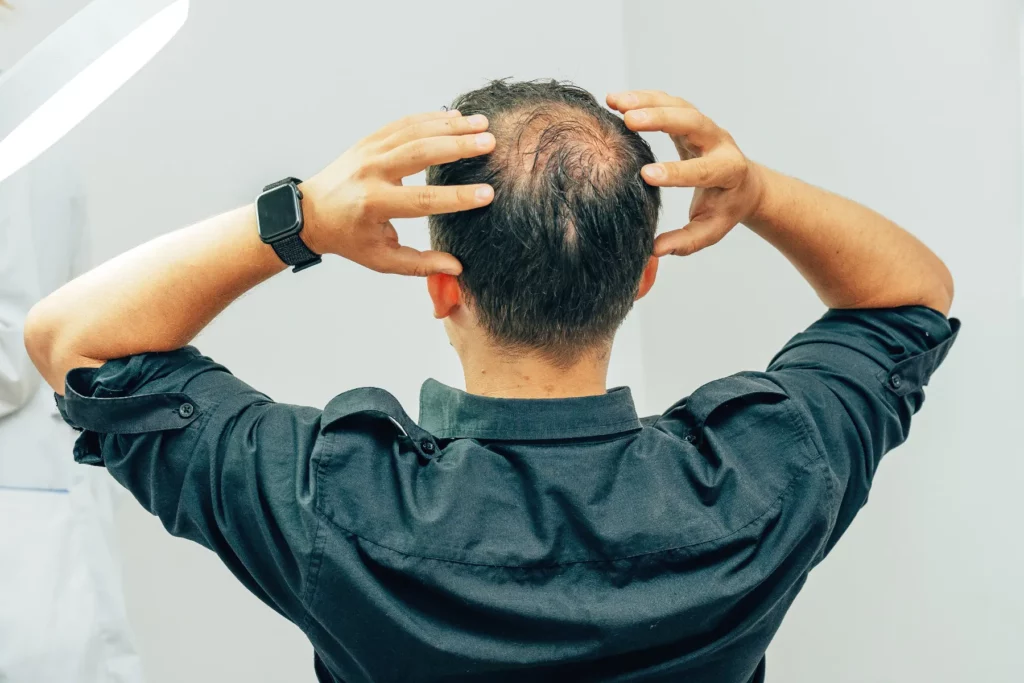Is Finasteride an effective hair loss treatment?
This question has captured the attention of many seeking solutions for hair loss. Finasteride’s origins trace back to the 1980s when researchers initially developed it as a potential treatment for enlarged prostates. During clinical trials, physicians noticed an unexpected side effect – participants experienced significant hair regrowth while taking the medication.
This serendipitous discovery led to further research, culminating in Finasteride’s approval for treating male pattern baldness. Marketed as Propecia, it quickly gained recognition as a legitimate hair loss solution. After Propecia’s patent expired, generic versions became available, making Finasteride widely accessible to those combating hair loss.
Currently prescribed to both men and women, Finasteride belongs to the 5-alpha-reductase inhibitor class. It works by preventing testosterone’s conversion to dihydrotestosterone (DHT), a hormone linked to genetic hair loss. By reducing DHT levels, Finasteride helps slow or reverse hair loss while promoting regrowth.
Individual responses to Finasteride vary significantly. While many report successful hair regrowth, others see minimal improvement. Factors influencing outcomes include: degree of hair loss, personal physiology, and treatment adherence.
Consultation with a healthcare professional is essential before starting Finasteride. They can assess your specific condition, evaluate your hair loss pattern, and determine if this treatment suits your needs. Medical guidance ensures proper dosage, awareness of potential side effects, and safe usage.
Potential side effects may include sexual dysfunction like reduced libido, erectile dysfunction, or decreased ejaculate volume. While uncommon, these typically resolve after discontinuing treatment. Discuss any concerns with your healthcare provider.
In summary, Finasteride demonstrates promising results for male pattern baldness. Its accidental discovery during prostate treatment trials revealed its hair growth properties. Though effectiveness varies, it remains a popular prescription option. Always consult a medical professional to determine if Finasteride is right for you.

How exactly does Finasteride work?
Finasteride’s mechanism involves blocking testosterone’s conversion to DHT, which plays a crucial role in male pattern baldness. DHT causes hair follicles to shrink, leading to thinning and eventual hair loss. By inhibiting this conversion, Finasteride interrupts this damaging cycle.
Stopping DHT production allows affected follicles to recover and regrow hair. Additionally, Finasteride prevents future hair loss by maintaining lower DHT levels. This dual action makes it valuable for treating male pattern baldness.
Genetic factors influence DHT production and hair loss susceptibility. Some maintain full hair naturally, while others experience early balding. Understanding your genetic predisposition helps assess Finasteride’s potential effectiveness.
Proper Finasteride administration
Take one tablet daily, swallowing it whole with water. Never crush or break tablets, as skin absorption can occur – particularly dangerous for pregnant women. No specific timing requirements exist, but consistency matters. Taking it at the same time daily establishes a routine that improves adherence.
Where to purchase Finasteride
MedsBird offers convenient online access to generic Finasteride (originally Propecia). Generic versions provide equivalent effectiveness at lower costs, making treatment more affordable.
In summary, Finasteride works by reducing DHT production, stopping follicle shrinkage and promoting regrowth. Genetic factors influence results. Proper administration involves taking whole tablets consistently. MedsBird provides affordable access to this effective treatment.

Finasteride treatment timeline
Visible results typically appear after three months of consistent use. Initial shedding may occur as weaker hairs make way for new growth – a positive sign the medication is working. Maintain treatment without interruption for optimal results.
Compare hair condition before starting and after one year of treatment. If no improvement occurs within 12 months, consult your GP to explore alternatives.
Long-term Finasteride use
Research from the Prostate Cancer Prevention Trial shows Finasteride is safe for extended use. Five-year studies demonstrate sustained hair growth and slowed hair loss progression with daily 1mg doses. While generally safe for long-term use, consult your doctor for personalized advice.
Finasteride’s effectiveness
Extensive research confirms Finasteride as the most effective male hair loss treatment, though individual results vary. It may not benefit completely bald individuals or those with conditions like alopecia. Consult healthcare professionals to determine if Finasteride suits your specific situation.
Sources:







